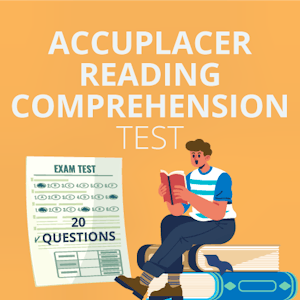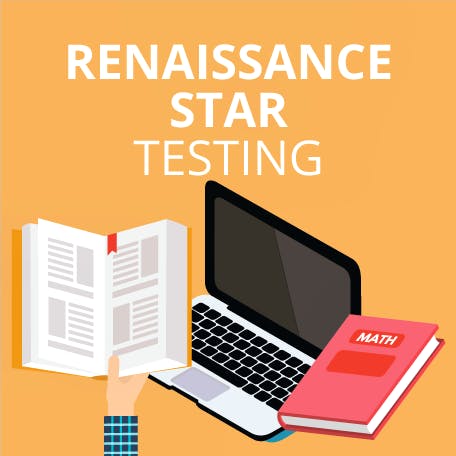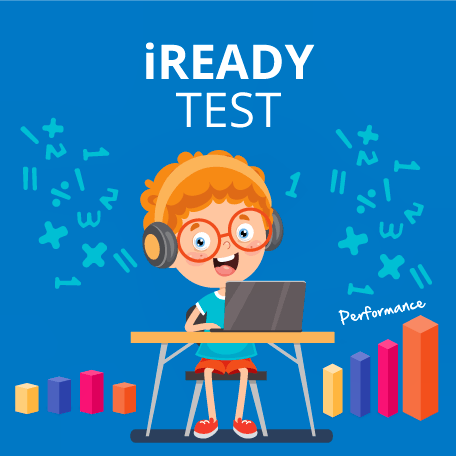How to Pass the ACCUPLACER Reading Comprehension Test in 2025
Updated November 18, 2023


What Is the ACCUPLACER Reading Comprehension Test?
The Accuplacer Reading Comprehension test is part of a suite of assessments that are used to evaluate students prior to entry at college.
While the Accuplacer test battery is not used to determine whether a student will achieve a placement at college, the results are used to ensure that the student is studying at an appropriate level and is ready for education at this level.
Created by the College Board, which is a not-for-profit organization that is also responsible for creating assessments like the SATs, the Accuplacer tests are designed to offer better opportunities to students and make entry to top colleges accessible to all.
Founded in 1900, the College Board has spent more than 100 years building relationships with over 6,000 of the top educational institutions in the world and supports around seven million students a year in preparing for college.
In the Accuplacer Reading Comprehension test, students need to demonstrate that they have the skills to read and understand different types of writing, and make logical deductions based on this written information.
Students usually take this reading comprehension for placement test as part of the application process, but it can also be used in situations where a high school student is looking to complete a college-level course, or for a student who is transferring from another college.
In some cases, the Accuplacer Reading Comprehension test is administered alongside other Accuplacer assessments, such as:
- Math – Arithmetic/Quantitative Reasoning, Algebra and Statistics/Advanced Algebra and Functions
- Writing – WritePlacer (essay questions)
- ESL tests like the Accuplacer ESL Reading Skills test
What Is Included in the ACCUPLACER Reading Comprehension Test
The Accuplacer Reading Comprehension test consists of 20 multiple-choice questions, and there is no time limit to complete this test. Most students will complete it within two hours.
The Accuplacer Reading assessment is a computer-adaptive test. This means that the difficulty of the questions will depend on your performance on the previous question.
If you get a question right, the next question will be harder – and if you get a question wrong, the following question will be easier.
The harder questions are worth more marks, so it is much easier to get a high score if you consistently answer the questions correctly.
In the reading test, this relates to the complexity of the text, which ranges from early high school level through to first year of college.
In the Accuplacer Reading Comprehension test, you are being broadly evaluated on your ability to gain meaning from written information.
You’ll need to demonstrate that you have a wide vocabulary and can pick up information that is both explicitly and implicitly available in the text.
Types of Questions
Each question on the Accuplacer Reading Comprehension test will be based on a passage of text. Some of these will be short (75 to 100 words) while others might be up to 400 words long.
Following these passages will be questions with multiple-choice answers, and you will need to use the information provided in the text to answer these.
You don’t need any specific knowledge to answer the questions.
They are on several different topics, and all the details you need to answer correctly are provided either explicitly or implicitly in the relevant passage – so as long as you read closely, you should be able to find the answer.
The sample texts that are used in the test might be narratives, which are usually literary works, informational texts which are explaining new information or arguments which seek to move a reader to action or to change their mind.
The subjects these texts might be on include:
- Science
- Humanities and Art
- History, Social Studies and Careers
Skills Tested
There are four skill categories that you will be evaluated on in this reading comprehension for placement assessment:
Information and Ideas
In this category, you are being evaluated on your ability to read a text closely so that you can pick out the information and ideas that are being shared, as well as be able to make reasoned inferences.
You’ll need to be able to summarize and understand the central ideas and themes of the passage, demonstrating that you can understand the relationships between people, events and ideas that are involved.
Rhetoric
This skill is all about analysis. You’ll need to be able to analyze the author’s word choice and how their selection affects the tone and overall meaning of the text, as well as the structure that has been used.
You’ll need to think about the point of view being shared and the purpose of the text.
An important part of this is to be able to analyze the arguments that are being used in the text – whether they provide evidence and are supported, or whether there are any counterclaims to consider.
Synthesis
Synthesis describes the ability to analyze multiple texts about the same (or a similar) subject.
This skill uses related abilities like logical thinking and inferences as well as reading closely.
Vocabulary
When demonstrating this skill, you will need to be able to show that you can understand the meaning of words and phrases in relation to the context they are presented in.
This might include things like idioms as well as less common words and phrases.
Example Questions for the Accuplacer Reading Comprehension Test
In the 19th century, the Industrial Revolution brought about significant changes in society. Factories replaced traditional craftsmanship, and urbanization led to the growth of cities. The shift from agrarian economies to industrial ones brought both benefits and challenges. On the positive side, it led to increased production and technological advancements. However, it also resulted in poor working conditions for many laborers, leading to the labor movement and the push for workers' rights.
According to the passage, what were some of the positive outcomes of the Industrial Revolution in the 19th century?
a) Improved working conditions for laborers
b) Decreased production and technological advancements
c) The growth of cities and urbanization
d) The decline of factories and traditional craftsmanship
Over the centuries, the Mona Lisa has remained one of the most enigmatic and celebrated works of art in history. Painted by the Italian Renaissance artist Leonardo da Vinci, this masterpiece has intrigued art enthusiasts, scholars and casual observers alike. Its mysterious smile and captivating gaze have inspired countless interpretations and discussions.
While many aspects of the Mona Lisa's creation are well-documented, there is one particular aspect that has puzzled experts for years: the identity of the subject. While some art historians believe the painting depicts Lisa Gherardini, the wife of Florentine merchant Francesco del Giocondo, others have put forward alternative theories, suggesting that it might be a self-portrait of Leonardo or even a composite representation of several individuals.
The enigma surrounding the identity of the Mona Lisa continues to fuel speculation and debate within the art world, adding to the allure of this iconic painting.
What is the primary focus of the passage regarding the Mona Lisa?
a) The artistic techniques used by Leonardo da Vinci in its creation
b) The various interpretations of the Mona Lisa's smile
c) The historical context of the Italian Renaissance
d) The identity of the subject of the painting
In the realm of contemporary literature, postmodernism is a literary movement that challenges traditional narrative structures and embraces a fragmented, non-linear approach to storytelling. This movement gained prominence in the mid-20th century and has since given rise to numerous experimental works of fiction that blur the lines between reality and fiction, often leaving readers in a state of uncertainty.
Based on the passage, which of the following best characterizes the central theme of postmodernist literature?
a) Emphasis on linear storytelling and traditional narrative structures
b) A preference for clear distinctions between reality and fiction
c) A focus on challenging conventional approaches to storytelling
d) A commitment to maintaining a sense of certainty for readers

If you want 12-month access to all the practice resources for this test, our partner TestPrep-Online.com offers a Family Membership.
Family Membership gives you access to all the TestPrep-Online resources for the next 12 months. You will also get two separate accounts, which can be very helpful if you have two children preparing for their tests.
Global climate change is one of the most pressing issues of our time. The rise in greenhouse gas emissions, primarily from human activities, has led to an increase in global temperatures. This, in turn, has resulted in rising sea levels, extreme weather events and threats to ecosystems and biodiversity. Addressing climate change requires a concerted effort from governments, industries and individuals worldwide to reduce emissions and transition to more sustainable practices.
According to the passage, what are some of the consequences of global climate change?
a) An increase in greenhouse gas emissions
b) A decrease in global temperatures
c) Rising sea levels and extreme weather events
d) Enhanced ecosystems and biodiversity
The Renaissance, a cultural and intellectual movement that began in Italy during the 14th century, had a profound impact on art, literature and science. It marked a shift away from the medieval era and celebrated humanism, individualism and the revival of classical Greek and Roman knowledge. Artists like Leonardo da Vinci and writers like William Shakespeare are often associated with the Renaissance, and their contributions continue to influence and inspire creativity to this day.
What characterized the Renaissance, as described in the passage?
a) A focus on the medieval era and rejection of classical knowledge
b) The celebration of humanism, individualism and classical knowledge
c) The exclusion of artists and writers from the movement
d) A rejection of art and science
How to Prepare for the Accuplacer Reading Test
Step 1. Take Reading Accuplacer Practice Test Papers
Practice tests for the Accuplacer Reading Comprehension test are readily available online.
You can find Accuplacer Reading Comprehension study guide resources on the College Board website or on TestPrep-Online that include different practice tests such as Accuplacer ESL reading practice test questions and Accuplacer Reading Comprehension practice test questions.
Using a reading Accuplacer practice test has several benefits, but one of the most important is to give you an idea of what the test will look like and how it is structured, so that you can feel more familiar with the layout.
This will help you feel much more confident when it comes to taking the real thing.
Another benefit of using Accuplacer practice reading tests is that they will help you understand what the content might be like – which is essential for creating a worthwhile revision plan.
Once you have taken an initial free reading Accuplacer practice test, you can use your results to focus on the areas where you might need some more work, or where you will need to look at basic principles of vocabulary, sentence structure and word use, for example.
Step 2. Revise Basic Reading Practices
Reading is a skill, and when it comes to reading for information you need to take in more information than you might do if you were reading for pleasure.
You can practice this by reading different sources of information, from a new fiction genre to informational texts and even business-related writing so that you can learn new vocabulary and different points of view.
When you are reading, try and be analytical – who wrote it and why? What are they trying to convey? Does what they have written make logical sense?
Step 3. Check Computer Equipment or Directions to Testing Location
In most cases, you will take the Accuplacer English Comprehension test as part of the application process for the college of your choice, so it is likely that you will have to travel to campus or an external testing location.
Make sure you know where you need to go and plan for traffic, whether you are driving or using public transportation.
You will be told what you need to bring on the day, but at the very least you will need photographic ID.
If you are taking the test remotely, make sure that you are somewhere quiet where you won’t be disturbed, and that you have a reliable internet connection so there are no issues remaining connected.
Step 4. Get Plenty of Rest, Drink Plenty and Eat Well
To get the most out of any testing situation, you need to prepare your body and your mind – and that means self-care.
Sleep is one of the best things you can provide for yourself when you want to improve cognitive function.
Scientific studies have shown that incorrect amounts of sleep can have quite a drastic impact on your brain power – so aim for at least six to eight hours a night.
Nutrition and hydration are also important. Drink plenty throughout the day and make sure that you have water with you during the test and focus on small but nutritionally balanced meals and snacks to help you with your nerves.
The questions in the Accuplacer Reading Comprehension test are based on different passages of text, and you need to be able to read and understand the information in the text to be able to answer the multiple-choice questions that follow.
Taking a free Accuplacer reading comprehension practice test can help you familiarize yourself with the type of questions you may be asked in the real test.
There are 20 questions on the Accuplacer reading placement test, and there is no time limit to complete the assessment – but most students complete it in around two hours.
Although there is no pass or fail mark for the Accuplacer reading test, if you want to get a good score it is essential that you prepare thoroughly.
You can find Accuplacer Reading Comprehension study guide resources to help at the College Board and at TestPrep-Online.
There is no time limit for the Accuplacer reading test – so you have plenty of time to read and answer the 20 questions on the test. Most people complete it within a couple of hours.
If you want to do better on the reading Accuplacer, you need to read more. Reading widely, covering different types of writing and really thinking about and analyzing what you are reading will help you become used to different word usage and structure – which is essential for success. You can also make use of Accuplacer practice reading tests to hone your skills.
There are lots of resources available online to help you study for the Accuplacer Reading Comprehension test, including guide materials and paid-for and free reading Accuplacer practice test papers.
Check out what is available at TestPrep-Online and at the College Board.
Final Thoughts
The Accuplacer Reading Comprehension test might only consist of 20 questions, but the adaptive nature of the test and the different source material used can make it challenging.
While getting a top mark might not be necessary to get a place at college, performing to the best of your ability will help you in your college career – so you will need to prepare.
Know what to expect, take practice tests and read widely for the best chance of a great score.












